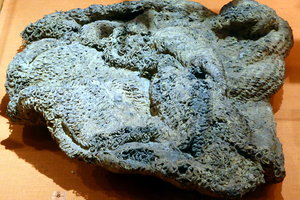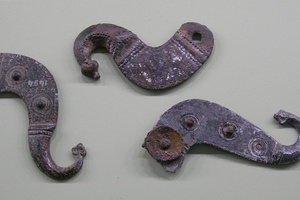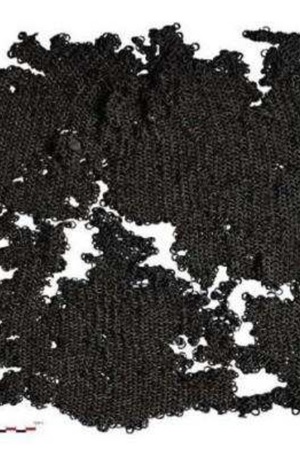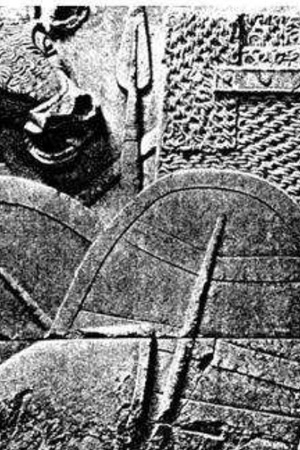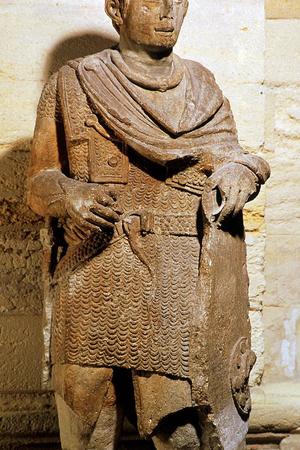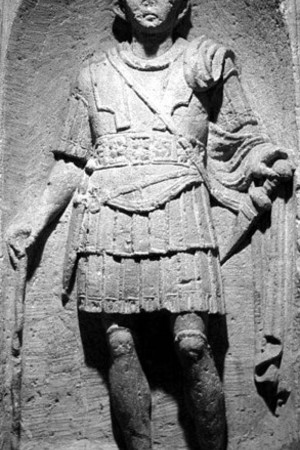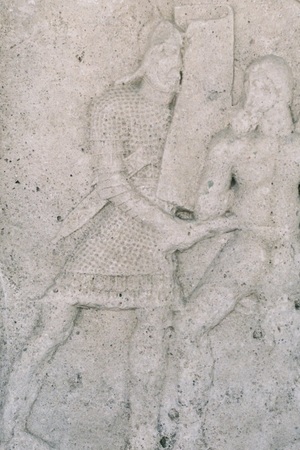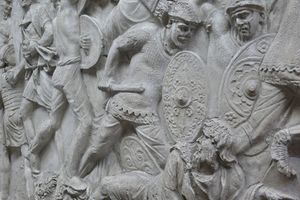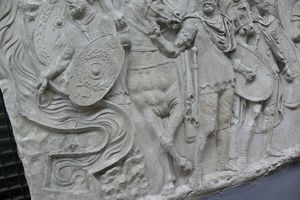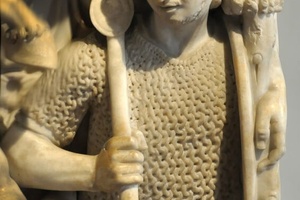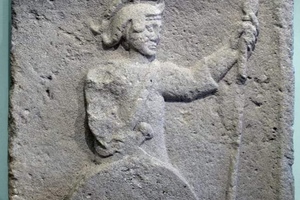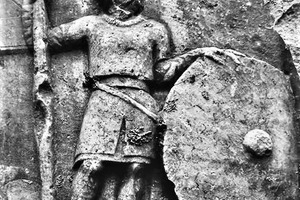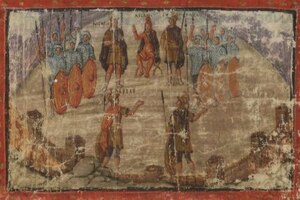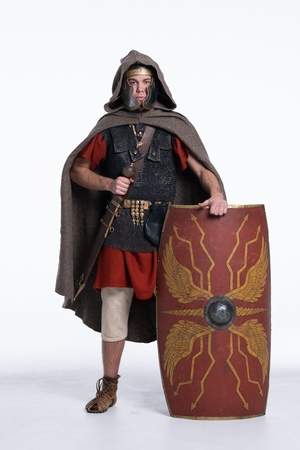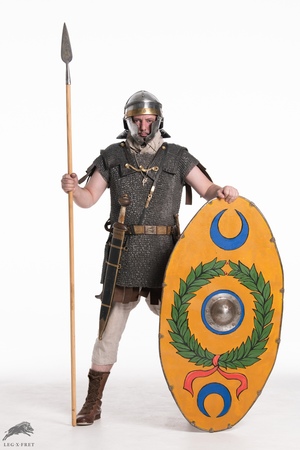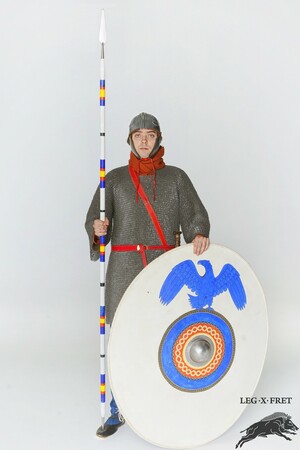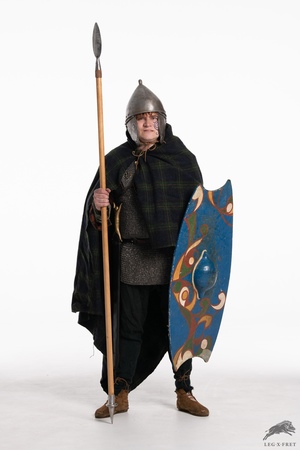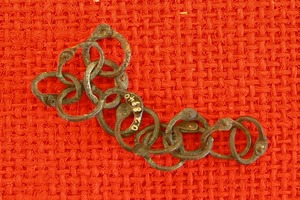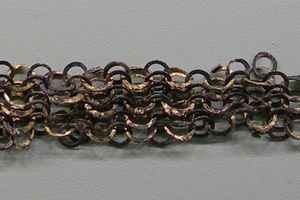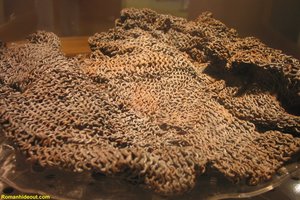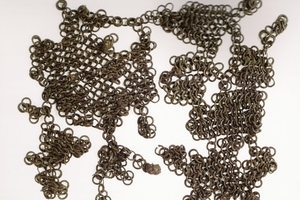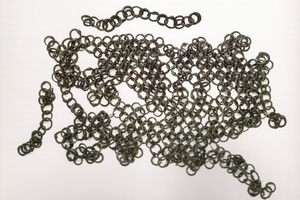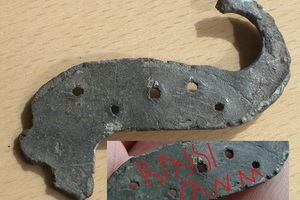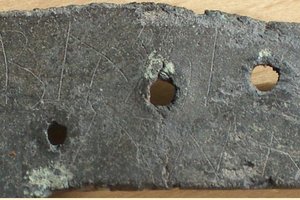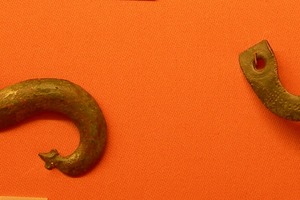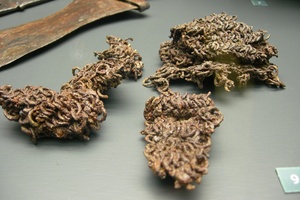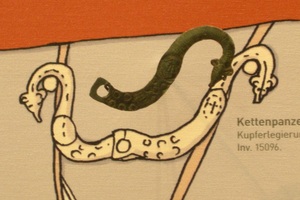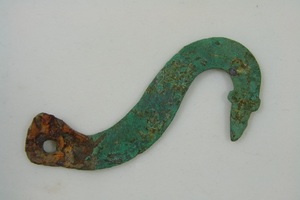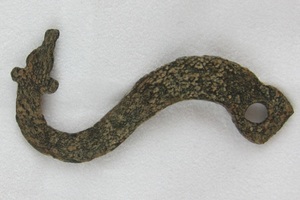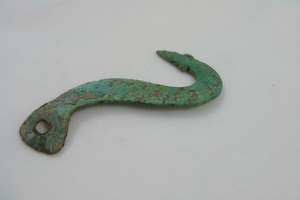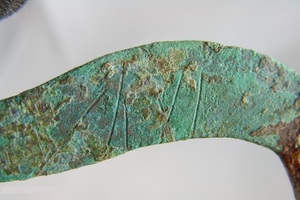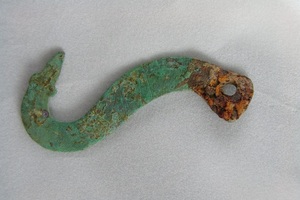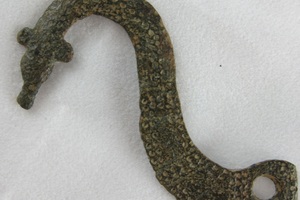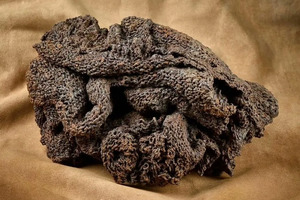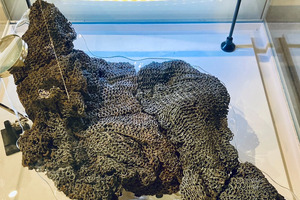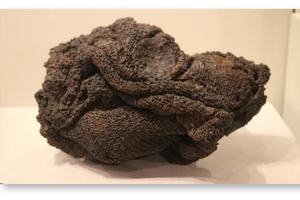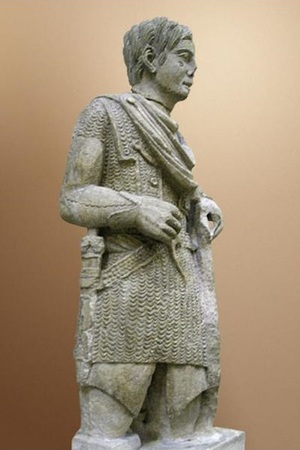Lorica hamata
Lorica Hamata (Latin: Lorica Hamata, "armor with hooks", from Latin hamus - "hook") - was a type of chainmail armor used in ancient Rome. It was one of the most popular types of armor in the Roman army and was in service for the longest time - over six centuries.
Lorica Hamata was primarily made from iron or bronze alloys. The rings were not simply joined together: rows of flat closed rings were interwoven with rows of riveted rings. This allowed for the creation of armor with good operational properties - sufficiently strong and flexible. The rings had an inner diameter of 5 mm and an outer diameter of 7 mm. The diameter of the wire from which the rings were made was about 1.7 mm. Several thousand rings were used to create one such armor!
Additional chainmail overlays, attached to brass hooks, could also protect the warrior's shoulders. They remotely resembled greek linothoraxes, which were also fastened at the front and back with bronze or iron hooks. The Lorica Hamata could reach mid-thigh in length, and its weight was 10-12 kg. For convenience and improved protective properties, a subarmalis was worn under the hamata. The main advantages of the Lorica Hamata over the Lorica Segmentata were greater comfort of wear and greater mobility of the legionnaire in armor, however, its protective qualities were not as good.
History
There is a version that chainmail armor appeared in the East, it is also not excluded that they were invented in several places by different peoples independently of each other. The Lorica Hamata in its familiar form, with shoulder pads, began to be actively used by the Celts, and the Celtic civilization became the main source of the spread of the hamata in the ancient world.
The Celtic civilization was in many ways more advanced than the Roman one. The Romans actively borrowed the experience of more advanced peoples, and among other technologies, they borrowed chainmail armor from the Celts. In the era of the Republic, the Lorica Hamata became the most popular armor in the Roman army.
In many ways, Celtic civilization was more advanced than the Roman one. The Romans actively adopted the experience of more advanced peoples, and among other technologies, they borrowed chainmail armor from the Celts. During the Republic era, Lorica Hamata became the most popular armor in the Roman army.
Among the officers of the Roman army, the Hamata was also widely used. There is evidence of its use by centurions and members of the standard-bearer group. It could also be used by junior officers, whose equipment was little distinguishable from that of ordinary legionnaires.
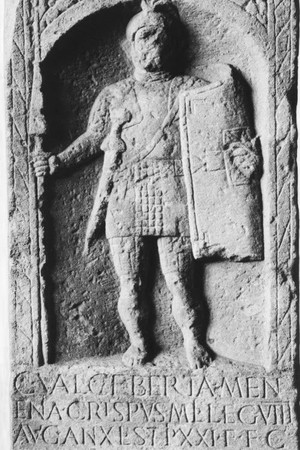 Legionnaire in hamat. Tombstone of legionnaire Gaius Valerius Crispus, who served in the VIII Augustan Legion. Wiesbaden. First half of the first century AD
Legionnaire in hamat. Tombstone of legionnaire Gaius Valerius Crispus, who served in the VIII Augustan Legion. Wiesbaden. First half of the first century ADIn the early Empire era, in addition to the Hamata, other types of armor began to be actively used - the lorica segmentata and the lorica squamata, which had better protective properties when receiving piercing blows. Also, the Hamata itself is divided into several subtypes: in addition to the classic Hamata, a shortened Lorica Hamata appears, reaching to the waist, without separate shoulder pads. Thanks to its flexibility and simplicity, it gained great popularity in the auxilia and roman cavalry. Thanks to the segment-ring structure, the armor damaged in battle could be restored simply with spare rings.
Sometimes the Romans "signed" their Lorica Hamatas, like other equipment. For example, on one of the hooks of the Hamata, found in Germany, the data about the legionnaire are written: M. Aii (cohort) I (first) > (century) Fab(ricii) e M. Aius (cohort) I (first) (century) Fabrici(i). Today this archaeological find is kept in the Kalkriese museum. In addition, the hooks were decorated with engraving and embossing, and their ends could be made in the form of snakes and other animals.
By the middle of the 3rd century AD, the Hamata again becomes the most mass armor in the Roman army. According to iconography, it had the style of a T-shaped shirt, and the sleeves could have a very different length, from the middle of the biceps to the wrist.
Reenactment
Lorica Hamata was worn by legionnaires, auxiliaries, centurions, standard-bearers, and cavalrymen. The armor was made of iron, but separate parts, for example, hooks, were cast from bronze alloys. The inner diameter of the chainmail ring was from 0.5 to 0.7 cm (0.6 cm is most common), the weaving of the Hamata itself was riveted-cut. Legionnaires in the 1st century and at the beginning of the 2nd century AD additionally reinforced the protection of the shoulders, and by the beginning of the 2nd century, the legionnaire's Hamata might not have shoulders. Auxiliaries used Hamata without additional shoulder pads. From the 3rd century, the chainmail took the form of a T-shaped straight-cut shirt, without tapering and gussets, the length of the sleeves and the hem could vary greatly.
Related topics
Auxiliaries, Legionnaire, Centurion, Lorica Segmentata, Subarmalis, Ala, Linothorax, Celts

 Gallery-Roman Finds
Gallery-Roman Finds






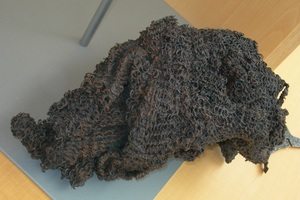 Fragment of hamata from Aalen (Germany). Presumably it belonged to a cavalryman. Limesmuseum Aalen - Aalen-D. 1st century AD
Fragment of hamata from Aalen (Germany). Presumably it belonged to a cavalryman. Limesmuseum Aalen - Aalen-D. 1st century AD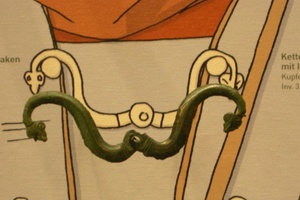 Hooks from Lorica hamata. Cortez Museum (Kalkriese Lost and Found Park). Late 1st century BC-Early 1st century AD
Hooks from Lorica hamata. Cortez Museum (Kalkriese Lost and Found Park). Late 1st century BC-Early 1st century AD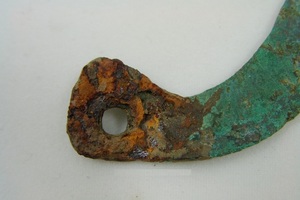 Fragment of a hook from hamata. Bronze. 6.5 *1.1 cm, thickness-0.9 mm. 1st century AD (presumably 75 AD)
Fragment of a hook from hamata. Bronze. 6.5 *1.1 cm, thickness-0.9 mm. 1st century AD (presumably 75 AD)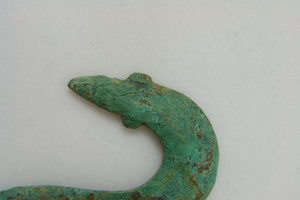 Fragment of a hook from hamata. Bronze. 6.5 *1.1 cm, thickness-0.9 mm. 1st century AD (presumably 75 AD)
Fragment of a hook from hamata. Bronze. 6.5 *1.1 cm, thickness-0.9 mm. 1st century AD (presumably 75 AD)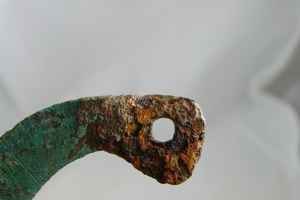 Fragment of a hook from hamata. Bronze. 6.5 *1.1 cm, thickness-0.9 mm. 1st century AD (presumably 75 AD)
Fragment of a hook from hamata. Bronze. 6.5 *1.1 cm, thickness-0.9 mm. 1st century AD (presumably 75 AD)Gallery-Celtic Finds
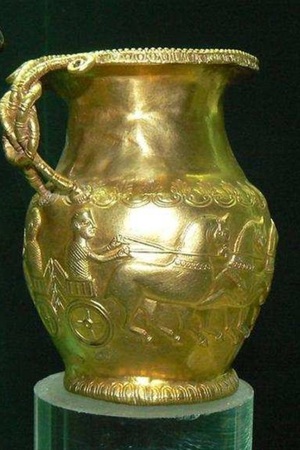 Celtic warriors in chain mail on a golden jug from Mogilan Tumul in Vratsa (Lovech region). 2-1 century BC
Celtic warriors in chain mail on a golden jug from Mogilan Tumul in Vratsa (Lovech region). 2-1 century BC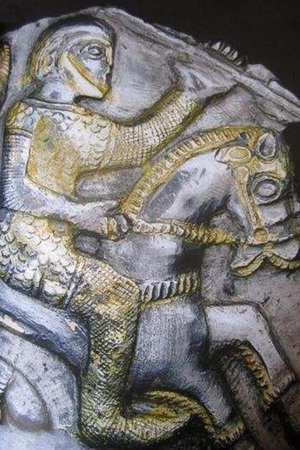 Celtic warrior in chain mail, depicted on the application of the treasure of Letnica. 2-1 century BC
Celtic warrior in chain mail, depicted on the application of the treasure of Letnica. 2-1 century BC